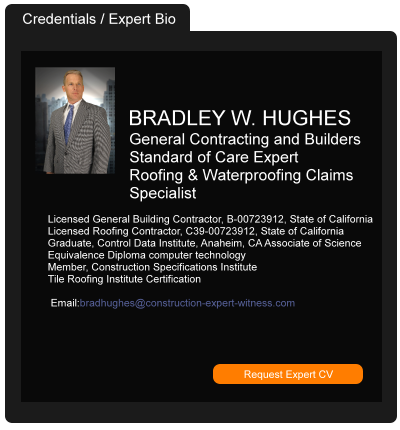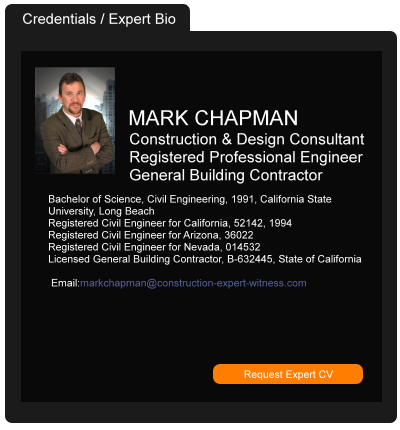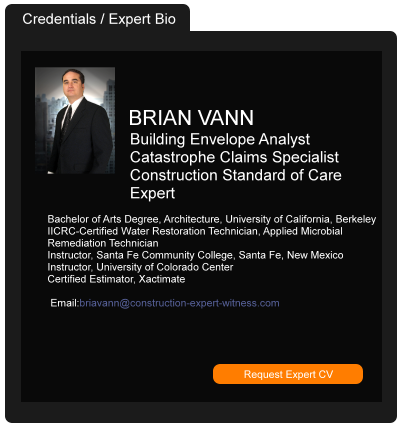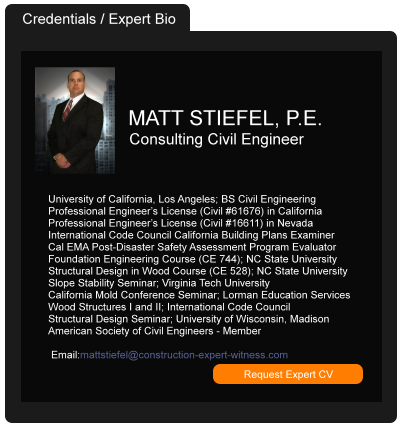Georgia Federal Court Says Fact Questions Exist As To Whether Nitrogen Is An “Irritant” or “Contaminant” As Used in Pollution Exclusion
May 20, 2019 —
Lawrence J. Bracken II, Michael S. Levine & Alexander D. Russo - Hunton Andrews KurthThe Southern District of Georgia recently ruled that Evanston Insurance Company is not entitled to summary judgment on whether its policies’ pollution exclusion bars coverage for the release of nitrogen into a warehouse. The case stems from an incident at Xytex Tissue Services, LLC’s warehouse, where Xytex stored biological material at low temperatures. Xytex used an on-site “liquid nitrogen delivery system” to keep the material properly cooled. This system releases liquid nitrogen, which would vaporize into nitrogen gas and cool the biological material. On February 5, 2017, a Xytex employee, Deputy Greg Meagher, entered the warehouse to investigate activated motion detectors and burglar alarms. Deputy Meagher was overcome by nitrogen gas and died as a result. Following Deputy Meagher’s death, his heirs filed suit against Xytex and other defendants. Evanston denied coverage based on the pollution exclusion in its policy. Evanston then brought a declaratory judgment action to confirm its coverage position.
In denying Evanston’s summary judgment motion, the Southern District of Georgia reasoned that the type of injury sustained is essential in analyzing whether the pollution exclusion applies. Specifically, Xytex argued, and the court agreed, that the underlying lawsuit alleged that the bodily injury was caused by a lack of oxygen, not exposure to nitrogen. The court also distinguished prior decisions, explaining that injury caused by a lack of oxygen is not a contamination or irritation of the body in the same way as injury resulting from exposure to carbon monoxide or lead. The court also found that Xytex “reasonably expected that liability related to a nitrogen leak would be insured.”
Reprinted courtesy of Haight Brown & Bonesteel LLP attorneys
Lawrence J. Bracken II,
Michael S. Levine and
Alexander D. Russo
Mr. Bracken may be contacted at lbracken@HuntonAK.com
Mr. Levine may be contacted at mlevine@HuntonAK.com
Mr. Russo may be contacted at arusso@HuntonAK.com
Read the court decisionRead the full story...Reprinted courtesy of
Construction Contract Basics: No Damages for Delay
May 06, 2024 —
Christopher G. Hill - Construction Law MusingsAfter WAY too long a hiatus, I am back with another in my series of “Construction Contract Basics” posts. In past posts, I’ve covered venue provisions, attorney fee provisions, and indemnity clauses. In this post, I’ll share a few thoughts (or “musings”) on the topic of so-called “no damages for delay” clauses. These clauses essentially state that a subcontractor’s only remedy for a delay caused by any factor beyond its control (including the fault of the general contractor), after proper notice to the owner or general contractor, is an extension of time to complete the work.
These types of clauses generally make it impossible for a subcontractor (if found in a Subcontract) or Contractor (if found in a Prime Contract) that is delayed through no fault of its own to recover any damages relating to the expenses that are inevitably caused by such delays. Such expenses/damages could include additional supervisory time (including more high-dollar superintendent payments), acceleration costs, demobilization/mobilization costs, and other related expenses. These can add up to real money. Couple that with the inevitable liquidated damages or delay damages that will occur should a contractor or subcontractor cause any delay, and this becomes a very one-sided proposition.
Read the court decisionRead the full story...Reprinted courtesy of
The Law Office of Christopher G. HillMr. Hill may be contacted at
chrisghill@constructionlawva.com
Meritage Acquires Legendary Communities
July 23, 2014 —
Beverley BevenFlorez-CDJ STAFFAccording to Big Builder, Meritage entered Atlanta through its acquisition of Legendary Communities for $130 million, “completing a two-year quest.”
“Probably for about two years, we’ve been looking in the market, talking to builders, and studying the geography, and meeting different people to learn who the players are and learn about the area,” Meritage Homes chairman and CEO Steven J. Hilton told Big Builder.
This acquisition makes Meritage Homes “the number one builder in the Greenville-Anderson-Mauldin, S.C. market, owning more than 16 percent of the 2013 market share with 266 closings, according to Metrostudy data. It also owns almost seven percent of the market share in nearby Spartanburg, S.C. with 44 closings.”
Legendary fits “in very nicely with what we do at Meritage,” Hilton said to Big Builder. “We’re a strong first and second move up builder, as are they at Legendary. It’s a very complementary fit between the two companies.”
Read the court decisionRead the full story...Reprinted courtesy of
Boston Catwalk Collapse Injures Three Workers
May 10, 2022 —
Scott Van Voorhis - Engineering News-RecordThe collapse of a catwalk in a defunct, 124-year-old power plant building in Boston on May 4 injured three workers in the latest in a spate of serious construction accidents in the city and its environs.
Reprinted courtesy of
Scott Van Voorhis, Engineering News-Record
ENR may be contacted at enr@enr.com
Read the full story... Read the court decisionRead the full story...Reprinted courtesy of
Georgia Amends Anti-Indemnity Statute
June 02, 2016 —
David R. Cook Jr. – AHHC Construction Law BlogIn its most recent session, the Georgia General Assembly passed HB 943, which amends Georgia’s Anti-Indemnity Statute. The amendment expands the Anti-Indemnity Statute beyond construction contracts to include contracts for engineering, architectural, and land surveying services (“A/E Contracts”).
In a
prior post, we discussed
Georgia’s Anti-Indemnity Statute, which generally prohibits indemnity clauses in construction contracts that require one party (the “Indemnitor”) to indemnify another party (the “Indemnitee”) if property damage or bodily injury results from the Indemnitee’s sole negligence. The
prior post, discussed the Supreme Court of Georgia’s broad interpretation of the Anti-Indemnity Statute.
HB 943 adds subpart (c), which states:
A covenant, promise, agreement, or understanding in or in connection with or collateral to a contract or agreement for engineering, architectural, or land surveying services purporting to require that one party to such contract or agreement shall indemnify, hold harmless, insure, or defend the other party to the contract or other named indemnitee, including its, his, or her officers, agents, or employees, against liability or claims for damages, losses, or expenses, including attorney fees, is against public policy and void and unenforceable, except for indemnification for damages, losses, or expenses to the extent caused by or resulting from the negligence, recklessness, or intentionally wrongful conduct of the indemnitor or other persons employed or utilized by the indemnitor in the performance of the contract. This subsection shall not affect any obligation under workers’ compensation or coverage or insurance specifically relating to workers’ compensation, nor shall this subsection apply to any requirement that one party to the contract purchase a project specific insurance policy or project specific policy endorsement.
(Emphasis added.)
Read the court decisionRead the full story...Reprinted courtesy of
David R. Cook Jr., Autry, Hanrahan, Hall & Cook, LLPMr. Cook may be contacted at
cook@ahclaw.com
Picketing Threats
July 09, 2019 —
Jerry Morales - Snell & Wilmer Under ConstructionLetters from unions to owners, general contractors and other contractors informing them of the union’s dispute with one or more of the subcontractors, working at a common construction project site (or common situs), and of the union’s plans to engage in “public informational campaigns” at the site, in furtherance of the dispute, may constitute unlawful threats of secondary boycott.
Unions often send letters to various employers that share a common construction project site, informing them that the union has a dispute with one or more of the subcontractors working or scheduled to work at the same site. In labor law, the employers that do not have a dispute with the union are referred to as “neutral employers,” in contrast with the employers with which the union has the dispute, referred to as “primary employers.”
In the letters, the unions typically describe the reason for the labor dispute (e.g., alleged failure to pay “area standards”), request that the neutrals use their “managerial discretion” not to allow the primary employers to perform work at the project site until the dispute is resolved, and inform that the union will engage in public information campaigns against the primary employer at the common situs. The “public information campaign” is described in the union’s letter as including banner displays, distribution of handbills, picketing and other demonstration activity.
Read the court decisionRead the full story...Reprinted courtesy of
Jerry Morales, Snell & WilmerMr. Morales may be contacted at
jmorales@swlaw.com
After Elections, Infrastructure Talk Stirs Again
December 04, 2018 —
Tom Ichniowski - Engineering News-RecordIn the wake of Democrats’ House takeover and Republicans widening their Senate majority in the midterm elections, talk has quickly revived about taking on infrastructure legislation in the new Congress. Construction industry officials welcome the pro-infrastructure rhetoric from congressional leaders and President Trump. But it remains to be seen whether the words will spark a bill that can make it through a divided 116th Congress. Funding the package remains the high hurdle.
Read the court decisionRead the full story...Reprinted courtesy of
Tom Ichniowski, ENRMr. Ichniowski may be contacted at
ichniowskit@enr.com
Curtain Wall Suppliers Claim Rival Duplicated Unique System
February 28, 2022 —
Annemarie Mannion - Engineering News-RecordChicago-area construction material suppliers that hold patents for a curtain wall system used in high-rise construction projects are suing a rival, claiming it created a knock-off of the system based on a former employee’s knowledge and put the system to use on construction projects.
Reprinted courtesy of
Annemarie Mannion, Engineering News-Record
ENR may be contacted at enr@enr.com
Read the full story... Read the court decisionRead the full story...Reprinted courtesy of


































































